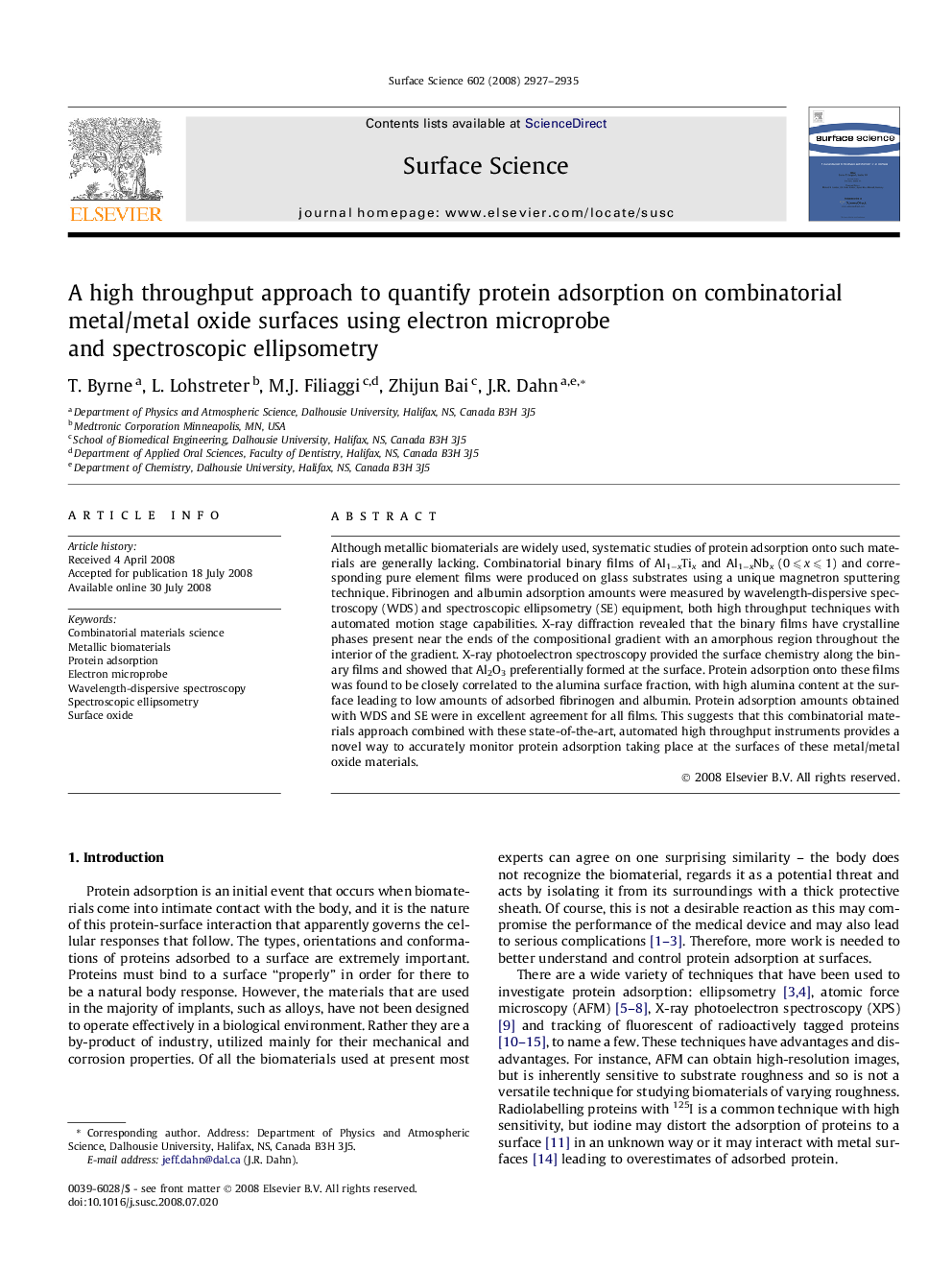| Article ID | Journal | Published Year | Pages | File Type |
|---|---|---|---|---|
| 5424903 | Surface Science | 2008 | 9 Pages |
Abstract
Although metallic biomaterials are widely used, systematic studies of protein adsorption onto such materials are generally lacking. Combinatorial binary films of Al1âxTix and Al1âxNbx (0 ⩽ x ⩽ 1) and corresponding pure element films were produced on glass substrates using a unique magnetron sputtering technique. Fibrinogen and albumin adsorption amounts were measured by wavelength-dispersive spectroscopy (WDS) and spectroscopic ellipsometry (SE) equipment, both high throughput techniques with automated motion stage capabilities. X-ray diffraction revealed that the binary films have crystalline phases present near the ends of the compositional gradient with an amorphous region throughout the interior of the gradient. X-ray photoelectron spectroscopy provided the surface chemistry along the binary films and showed that Al2O3 preferentially formed at the surface. Protein adsorption onto these films was found to be closely correlated to the alumina surface fraction, with high alumina content at the surface leading to low amounts of adsorbed fibrinogen and albumin. Protein adsorption amounts obtained with WDS and SE were in excellent agreement for all films. This suggests that this combinatorial materials approach combined with these state-of-the-art, automated high throughput instruments provides a novel way to accurately monitor protein adsorption taking place at the surfaces of these metal/metal oxide materials.
Keywords
Related Topics
Physical Sciences and Engineering
Chemistry
Physical and Theoretical Chemistry
Authors
T. Byrne, L. Lohstreter, M.J. Filiaggi, Zhijun Bai, J.R. Dahn,
